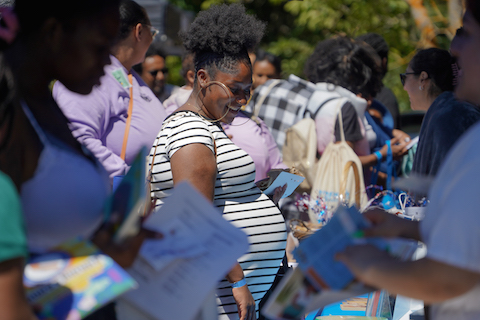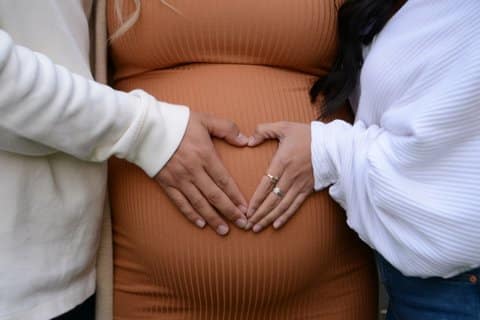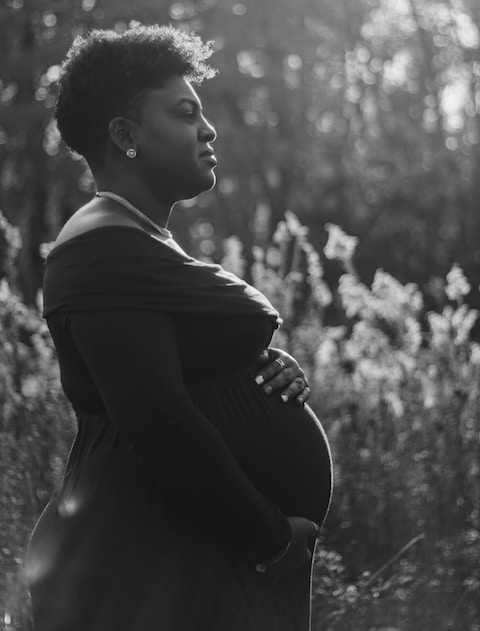
13 Oct California Launches Effort to Slash Maternal Deaths by Half

(Photo via EMS)
By Selen Ozturk, Ethnic Media Services
Facing wide racial disparities, California aims to slash its maternal mortality rate by half in two years.
Launched last month with a goal of December 2026, Strong Start & Beyond is an educational campaign under California Surgeon General Dr. Diana E. Ramos to help mothers prevent pregnancy complications.
Over 80% of maternal deaths are preventable.
A key part of the campaign, using existing state Surgeon General Office funding, is an at-home risk assessment survey using research from Stanford scientists to help parents screen for risks like preeclampsia, sepsis, heart disease and preterm births.
The campaign will also host community outreach events with health care and reproductive rights organizations statewide, promoting risk awareness and urging local health providers to adopt an Obstetric Morbidity Index published by the National Library of Medicine.
>>>Read: Black Infant Health Helps Black Moms ‘Give Birth the Way She Wants’<<<
California has the lowest maternal mortality rate in the country and has led historic successes on this front before, cutting its maternal death rate 55% from 2006 to 2013.
However, the pandemic saw overall maternal death rates skyrocket to 68.8% higher in 2021 than in 2019 — from 12.8 deaths to 21.6 per 100,000 live births, per the state data dashboard.
“We’re not stopping just to have the lowest rate. One mom lost is one mom too many,” said Ramos at a Monday, Oct. 7 state-hosted ethnic media forum on Strong Start & Beyond.
Statewide, the years between 2019 and 2021 saw an average of 70 annual deaths during pregnancy, at birth or within a year of it — one mother every five days, and over 200 mothers in all.
Maternal disparities
“We’re really looking to address ethnic and racial disparities in maternal mortality,” said Ramos. “While we’ve improved some rates, others are steadily increasing.”
From 2013 to 2021 — the latest data available — the Black maternal mortality rate improved from five to seven times higher, down to three to four times higher than other groups, or a current 49.7 deaths per 100,000 live births.
But during that time, the Hispanic rate more than doubled from 7.5 to 17.7 deaths per 100,000 live births, while the Asian rate rose from 11.1 to 14.4, and the white rate rose from 12.3 to 14.
“The goal of Strong Start & Beyond is to address what moms are dying of, and focus on what can be done before they’re pregnant,” said Ramos.
The past few years have seen new trends in causes.
Increasingly, Californian mothers are dying from chronic issues like heart disease (23%) and behavioral health (12%), rather than traditional causes like bleeding (14%) or infection (12%).
Q&A: At Black Infant Health, ‘There’s Something We Can Do to Support That Family’
“As an OBGYN, that first appointment, I’d tell a person, ‘It looks like you’re going to be high-risk based upon your history.’ And I would hear, over and over: ‘I wish I’d known before I became pregnant that I could have done something,’ ” said Ramos.
She added that by the end of this year, the campaign will release its seven-question risk assessment survey “to alert people to potential complications. We want to put this in the laundromats, the supermarket, wherever people are already, beyond the hospital.”
As of 2021, most maternal deaths in California — 27.4% — occur one to six weeks after delivery, while 61.1% of deaths overall happen within the year after delivery.
“Women are over half of the population, so we all know somebody who faces these risks,” said Ramos. “Having a child is an amazing experience, but it’s an exhausting experience, and it’ll take a community effort to help.”
Mothers’ stories
“My pregnancy was high-risk because I had diabetes, and I was 42. My doctors were great about asking me if I had any questions, but I never knew what to ask, because it was all so new. Right before the delivery, the doctor told me I would have to do it earlier, at 39 weeks. I said okay, without question, because I didn’t know I had an option,” said Sansanee Saejear, a single mother in San Francisco.
The vast majority of California pregnancy-related deaths — 43.1% — happen to mothers aged 40 and over.
“What helped most was a friend of a friend, a doula,” said Saejear. “The first few months after delivery, I’d wake up at night because my baby would cry, and I’d cry because I didn’t know what to do. I couldn’t sleep or take care of myself. The doula told me how to be there for my child, and took care of the child so I could get to sleep at night.”
>>>Read: Doulas Provide Much-Needed Tradition of Support to Birthing Parents<<<
Doulas are trained professionals who provide physical, emotional and educational support to patients before, during and after childbirth.
According to the American College of Obstetricians and Gynecologists and the Society for Maternal-Fetal Medicine, “one of the most effective tools to improve labor and delivery outcomes is the continuous presence of support personnel, such as a doula.”
“While the U.S. spends more on maternal care than any other first world country, we have the worst outcomes — and communities of color bear the brunt,” said Kairis Chiaji, a Sacramento-based doula for over 25 years and founder of Children of the Sun Doula Project.
“It’s not race — it’s inaccessibility,” she continued. “If we want to help the mothers who need support, we need to make sure there are no wrong doors — that when you’re seeking mental health care, for example, any organization you reach out to will keep going until they find someone, like a doula, who can sit with you when you’re crying at 2 a.m. and hold you through until 8 a.m., when you can call your provider.”
“I have children aged 6, 3 and 1 and experienced severe postpartum preeclampsia with all three pregnancies,” said Dr. Nzinga Graham-Hines, a Los Angeles-based physician. “Higher education, better finances and ZIP codes protect for many health risks, but not so much when you’re Black and pregnant in our healthcare system.”
Preeclampsia is an often severe and fatal condition involving high blood pressure and signs of liver or kidney damage after the 20th week of pregnancy.
It’s estimated to occur in 5% to 7% of all pregnancies, and occurs with Black women 60% more than with white women nationwide.
“After being induced early at 37 weeks and readmitted to the ER after birth, I recovered and lost weight, ran regularly and ate healthy — until I delivered my second baby and was readmitted again with preeclampsia,” Graham-Hines said. “I did everything right, but the biggest risk factor for a health complication is having had it before.”
“Our system contributes to a lot of these complications with women of color,” she continued. “I went into the ER saying that I had the same symptoms — a headache, vision changes, elevated blood pressure — and even as a physician, I was dismissed as just anxious or tired.”
After her third pregnancy, she was back in the ER with the same symptoms six days after delivery, “but this time I chose a medical team that could advocate for me, and because of that I’m still here with a healthy 13-month-old son,” Graham-Hines said.
“If I could tell mothers anything, it would be: Don’t be afraid to ask for help, but also, don’t be afraid to ask for a different doctor,” she added. “Above all, you need to be heard by the person caring for your life and your baby’s.”






No Comments